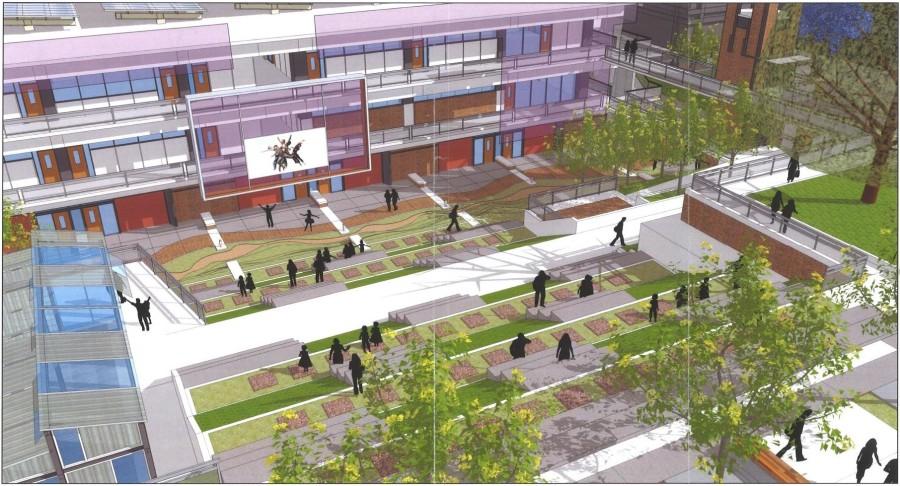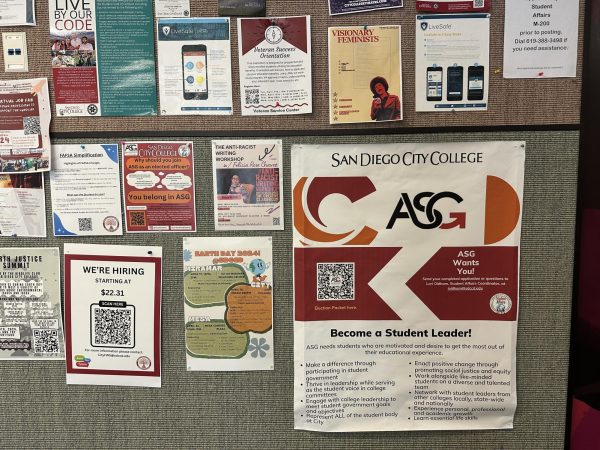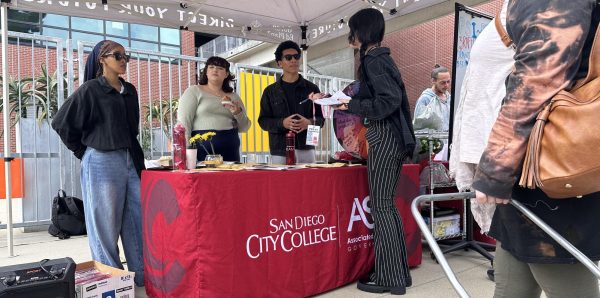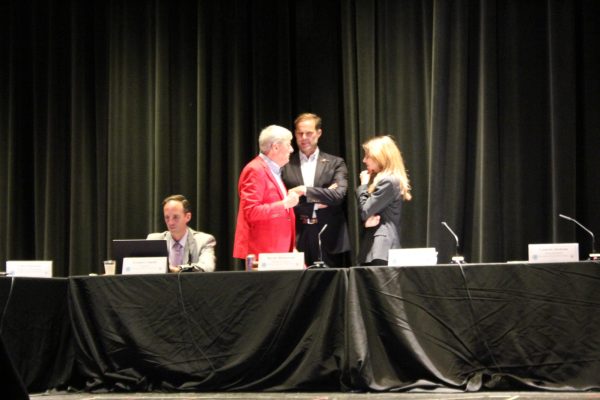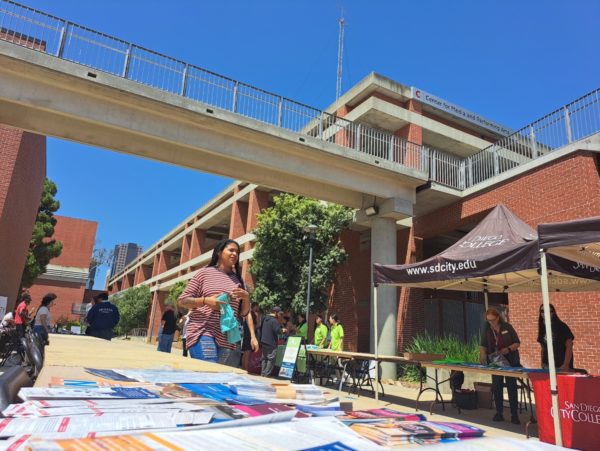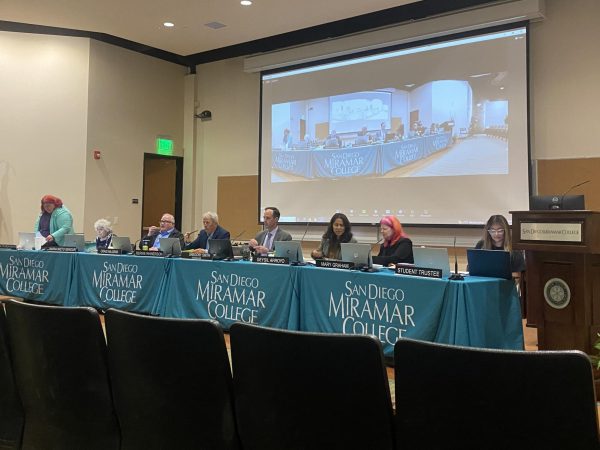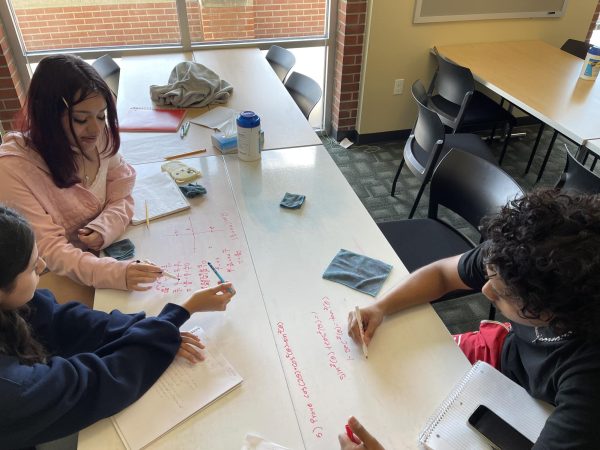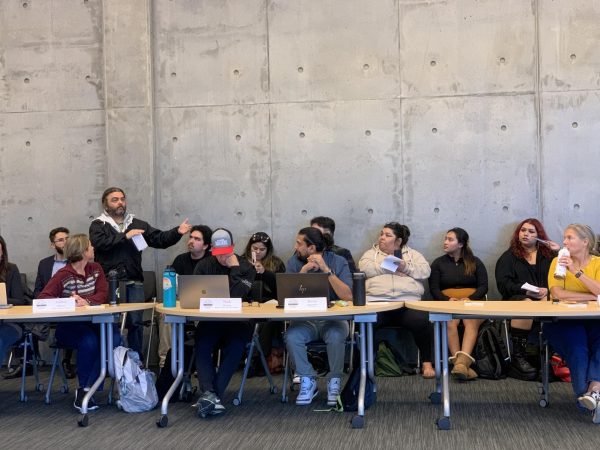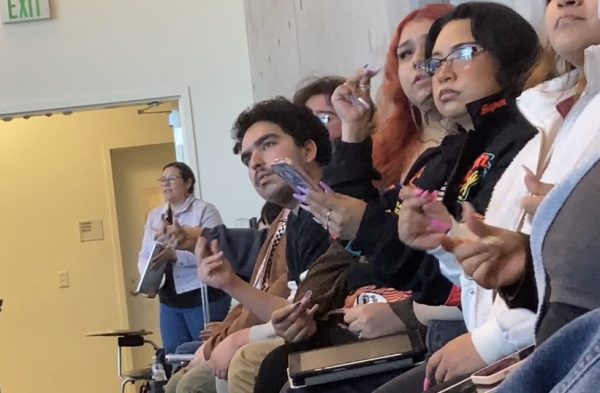Getting technical with the T building
Engineering and Technology building to undergo renovations in summer 2016
An aerial view of an early rendering of the completed T building. Photos courtesy of Tom Fine and RJC Architects
December 15, 2015
Another older building bites the dust as the Engineering and Technology building, better known as the T building, will be receiving a much needed upgrade beginning July 1 of next year.
The T building plan was added along with the renovations of the A and D building brought by Proposition N. According to www.smartvoter.org, Prop. N is part of an $870 million Community College Bond Measure. It is designed to better prepare community college students in transferring to four-year universities.
This includes updating already established educational facilities as well as upgrading science and high-tech training labs, repairing aging roofs and safety systems by issuing $870 million in bonds. This proposition had to be approved by 55 percent of voters.
This gave authorization to the San Diego Community College District to issue and sell the money received. The sale of the bonds will raise money for the district to complete projects such as the ones at City College. The district will then promise to pay the holder of the bonds an amount of interest in exchange for the money received from the holder of the bonds.
Tom Fine, campus project manager, explained that the renovation projects for the A, D and T building were going to be three separate projects. Because all three buildings are located in close proximity of each other, it made more sense to create one team for all three projects instead of two separate teams.
The bond program of Prop. N included the T building, and the building was examined by an independent structural engineer who said the building was in perfect condition.
Services that will occupy spaces in the T building are Heating, Ventilation, and Air Conditioning (HVAC), the mailroom and the Shipping and Receiving department. The Center for Applied Competitive Technology will also reside in the T building. The agriculture department will also receive classrooms that will be used as labs for growing vegetables, fruit, etc.
The access way that goes through the T building is easier to deliver material other than mail from the A building, where the mailroom is now. The City College IT and Technical services will also be moved into the Engineering and Technology building, as well as the MESA program. Child Development classes will remain in the T building. A new add-on to the building will be an incubator business program, according to www.sdccd.edu/docs.
“The first floor can be leased to businesses that may not have financial capacity,” Fine said.
The building will add 100,000 square feet to its originally planned 77,000 square feet that was able to make the incubator program possible. An objective hoped to be obtained by this building will be a LEED silver certification by the U.S. Green Building Council, according to Fine.
LEED, which stands for Leadership in Energy and Environmental Design, works on a point system. The more points a building earns, the higher the rating received. The budget for the building was $35.5 million, Fine said by email.
The approach to the design of the building was the design-build approach, where a contractor, architect, electrical engineer and plumber are hired simultaneously instead of the design-bid-build approach.
Fine explained the latter creates more of a hassle because the idea of the design for the building first has to go through many architects who then bid the highest to see which idea is best. The process of building and hiring the different people needed for specific jobs starts and with the design-build approach; the long process is sped up by hiring all necessary parties at once.
The last thing that had to be discussed with Fine was the idea of phasing. This term refers to the process of moving everyone occupying the building and putting classes in temporary spaces, according to Fine.
This cost of up to $2 million and electrical, utilities and water has to be taken into account. This will start what is hoped to be the two-year process of the new and improved T building along with more changes to come for the A and D buildings.


